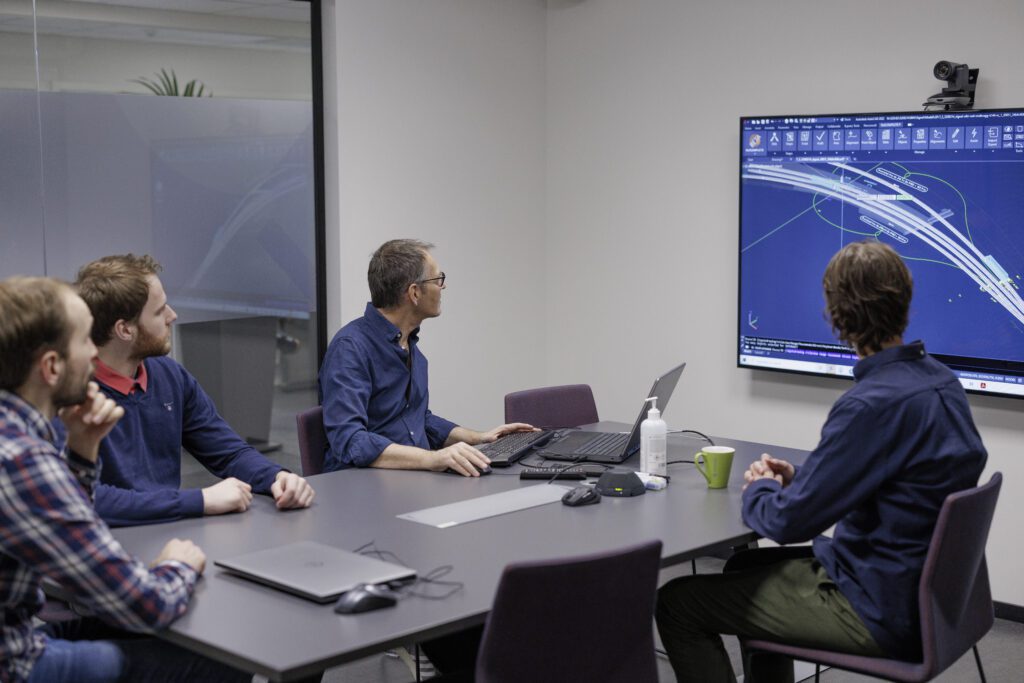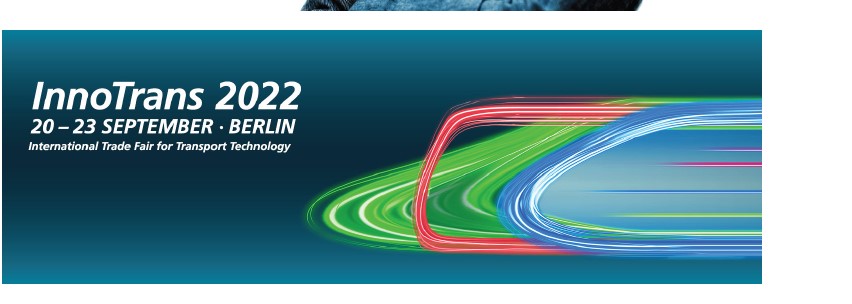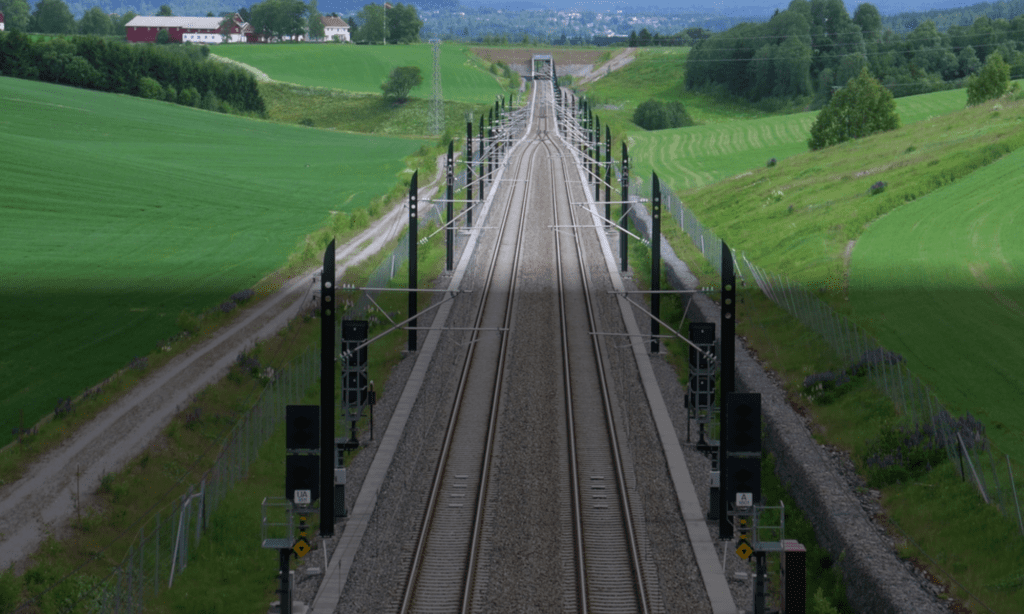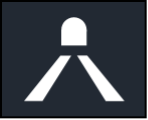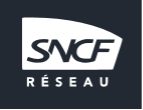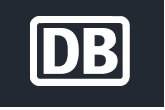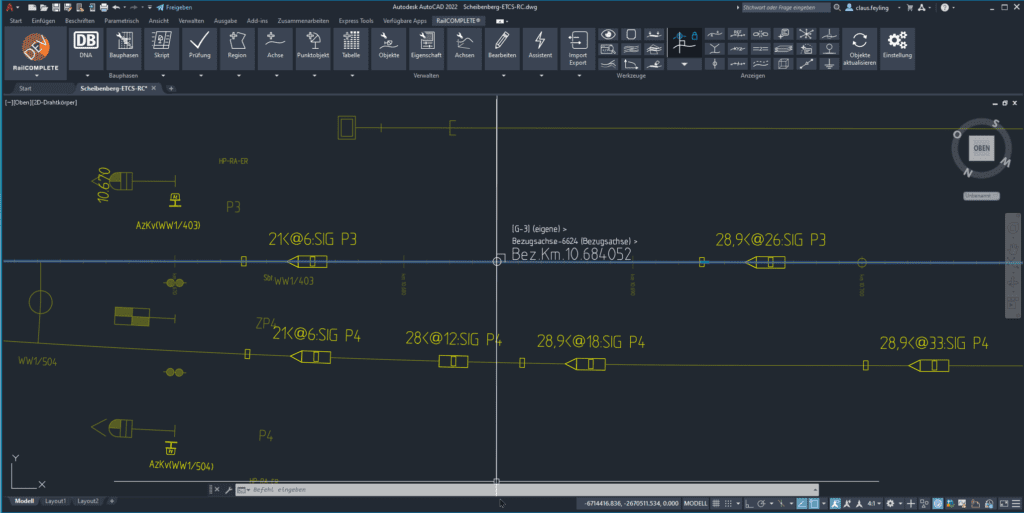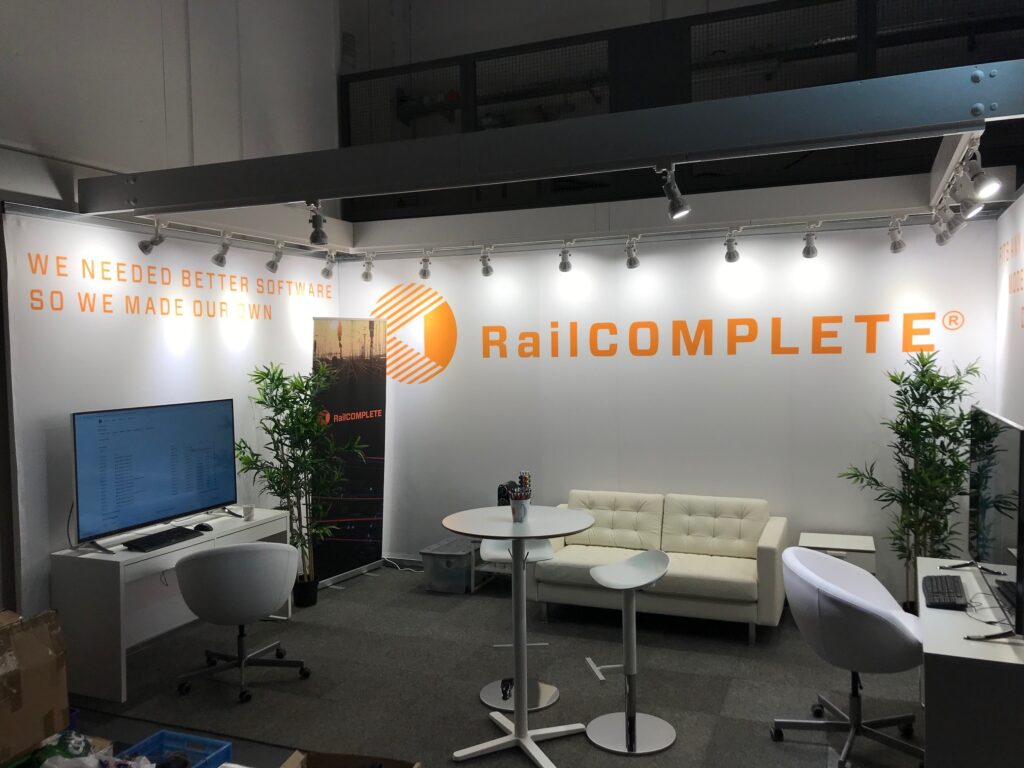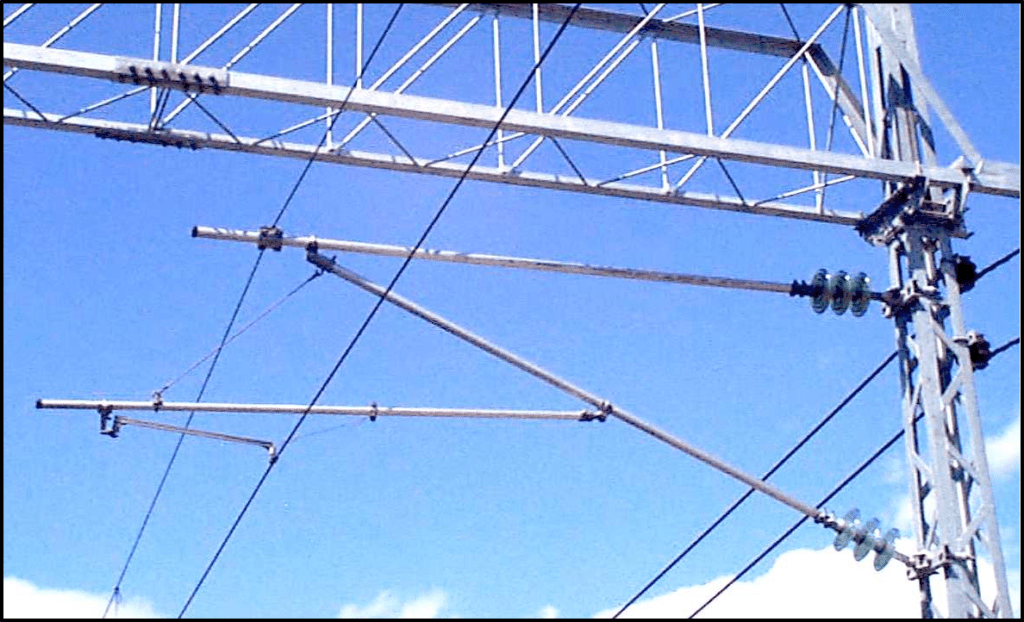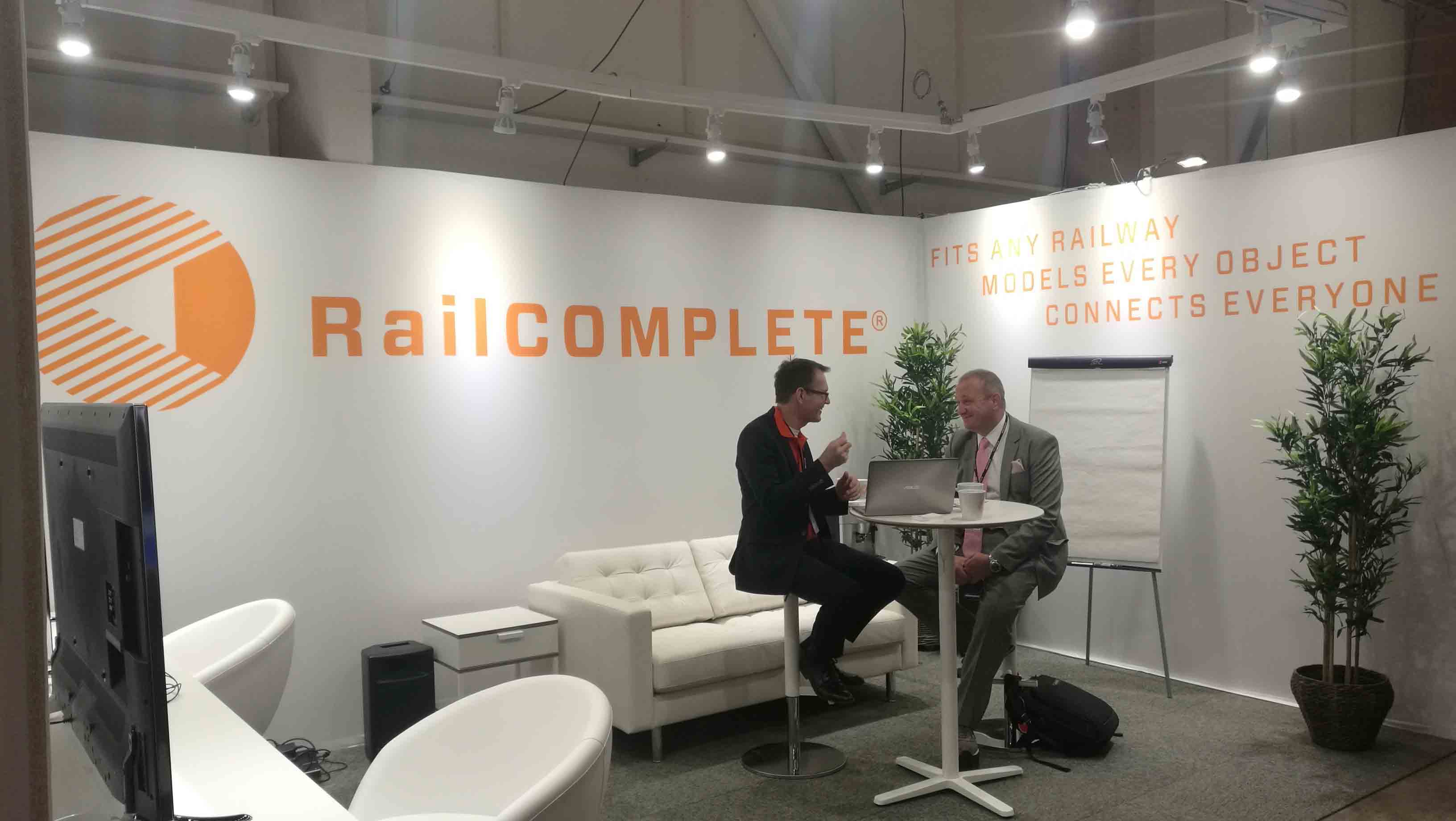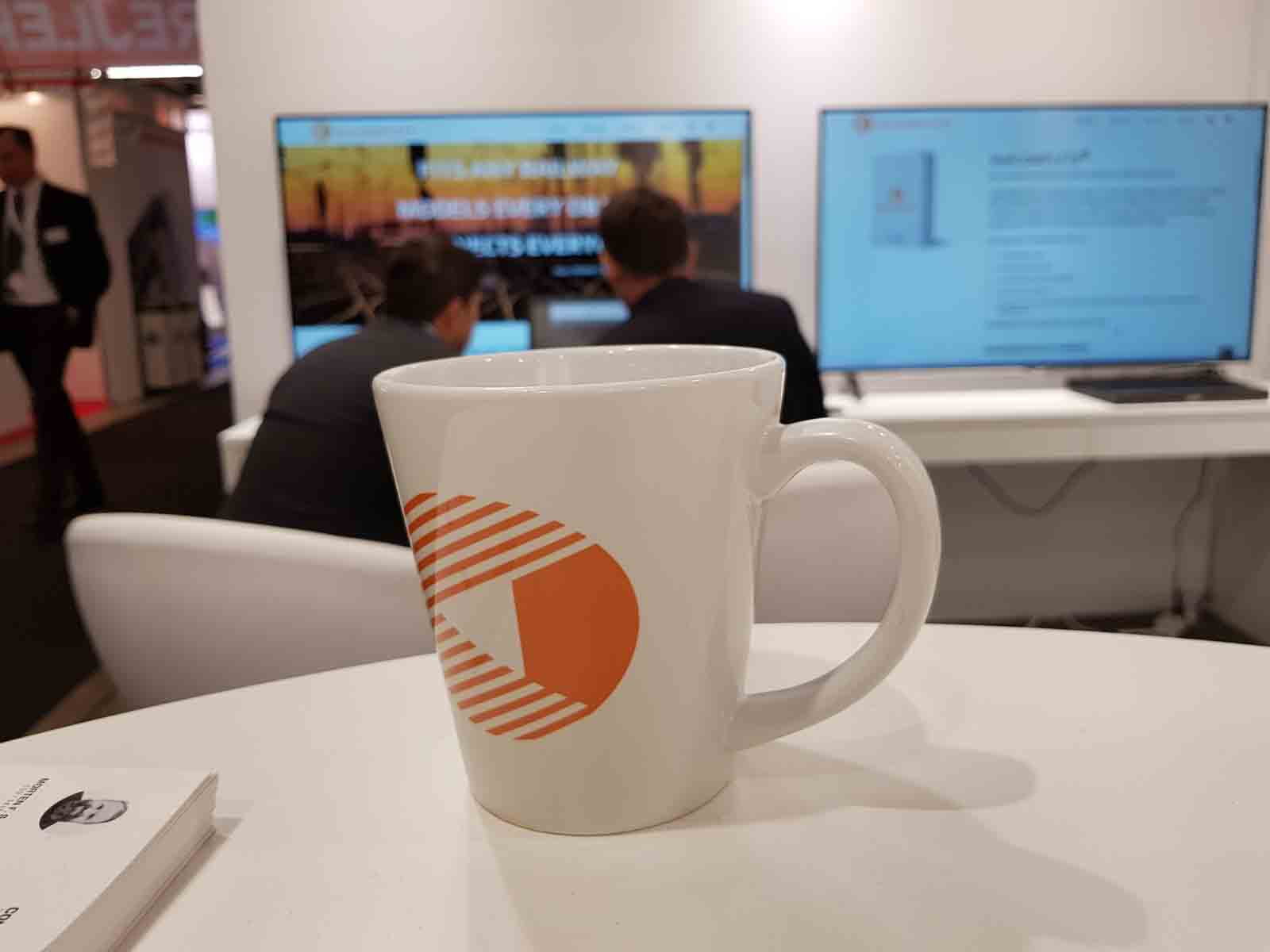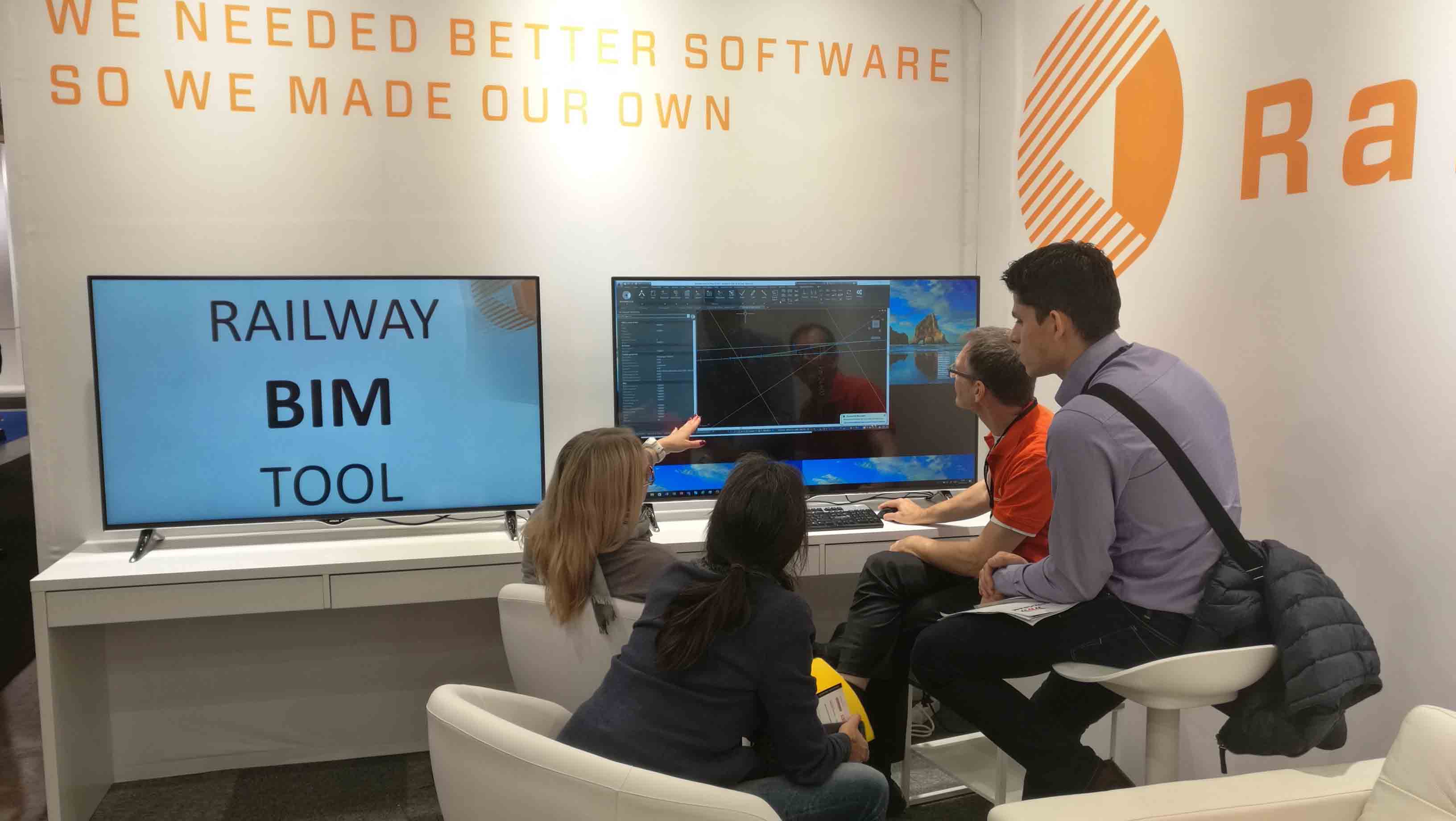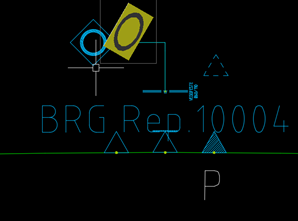IFC Rail 4×3
BuildingSMART International (BSI) is a standardisation organisation for exchange formats for the construction industry. In recent years, it has expanded its focus from buildings to road and railway projects, including bridges and tunnels.
Railcomplete AS has been a permanent member of the standards committee for Alignments With Cant of the IFC Rail 4×3 standard since 2020. The committee has developed specifications for the exchange of alignment objects, generating accurate mathematical descriptions for horizontal geometry, vertical profile and cant profile. Work has also been carried out to define the rules for translating a precise mathematical description into 3D geometry.
The aim is to be able to exchange not only the appearance of the tracks in 3D, but also the way they are defined internally. It will thus be possible for a modern IFC viewer to display a position not only in XYZ coordinates, but also in the form of a track name and a mileage value, while moving around in an IFC railway model.
During the International Standards Summit, which will be held from 27 to 30 March 2023 in Rome, BSI is organising a Serious Game event to show that the IFC Rail 4×3 standard is ready for use.
Six software producers will be present
Six software companies made their products available, including three Norwegian companies: Railcomplete (publisher RailCOMPLETE®), Novapoint Norway (publisher Novapoint®) and Catenda (BIM collaboration tool).
| Tool type | Organisation | Tool for the game | Type |
| Authoring (editor) | ACCA | usBIM Infra | Desktop |
| Autodesk | Civil3D 2023.2 with IFC4.3 update | Desktop | |
| RailCOMPLETE | RailCOMPLETE with IFC Rail 4×3 alpha | Desktop | |
| SierraSoft | SierraSoft Rails | Desktop | |
| Sogelink | Georail | Desktop | |
| Trimble | Trimble Quadri & Novapoint Railway | Desktop | |
| Validator or Viewer | ACCA | usBIM.ids | Web |
| buildingSMART | bSI Validation Service | Web | |
| Catenda | Catenda Hub | Web | |
| ODA | Open IFC Viewer | Desktop | |
| RDF | Geometrical check + IFC validation | Desktop | |
| The Hard Code | IDS checker + editor, IFC checker | Web |
Six teams
The participants come from various European railway administrations and service companies.
Six teams will be formed. Each team will be a balanced mix of novice and experienced users. Tools will be allocated to each team by lottery and each team will receive a short introduction from “their” tool provider.
Description of Challenge STN01 – Station 01
From the dataset provided, teams will have three hours to create a simple railway model, print it in IFC Rail 4×3 format, validate the IFC file and finally display the railway model in an IFC viewer.
The railway track proposed for this challenge has horizontal and vertical curves and variable superelevation. Two optical signals are to be inserted along the track. The track mileage must be correctly defined, and the optical signals must be placed at specified mileage points.
The IFC file produced shall contain the following elements:
– Identification of the software and its publisher.
– Identification of the company and the employee carrying out the project.
– Name and version of the project.
– Coordinate Reference System.
– Mathematical description of the track alignment in terms of horizontal geometry, vertical profile and cant (superelevation).
– Mathematical description of the linear placement of the two optical signals, with a specified lateral and vertical offset from the track alignment.
– 3D version of the model content. The organising committee dictates the appearance of the optical signals; each supplier is responsible for the 3D appearance of the track.

Figure 1: RailCOMPLETE combines business logic (mathematical formulation) and 3D geometry in a single editor

Figure 2: The Alignment Manager user interface in RailCOMPLETE – Horizontal Geometry

Figure 3: The Alignment Manager user interface in RailCOMPLETE – Vertical profile

Figure 4: The Alignment Manager user interface in RailCOMPLETE – Cant (superelevation)
And the winner is…
The jury will evaluate the effort and the result according to the team and the maturity of the tool used. The jury will check that the required elements are present in the IFC file, and that their values are correct.
Honour and glory await the winning team – but the first winner is the process itself: together we will have demonstrated that the IFC Rail 4×3 standard has become a reality.
The way forward – Model View Definition
The IFC language is extremely rich and therefore there are many ways to express the same concept. To ensure that there is a common understanding of IFC formulations, so that the exchange of data between partners does not result in loss of information, work is underway to specify the Model View Definition (MVD). This is a set of rules to be used by the sender and receiver when creating and checking IFC files. A particular railway administration, such as SNCF, will publish its own MVD, which will specify all the expectations and interpretations it applies to the exchange of IFC data for its own railway network. This will ensure consistency over time between data tools.
See also…
https://www.buildingsmart.org/
https://www.buildingsmart.org/standards/rooms/railway/ticket-to-openbim/
Rome Game Event Tool Providers
https://technical.buildingsmart.org/standards/ifc/ifc-schema-specifications/



